
JunOS_2_routingessentials
.pdf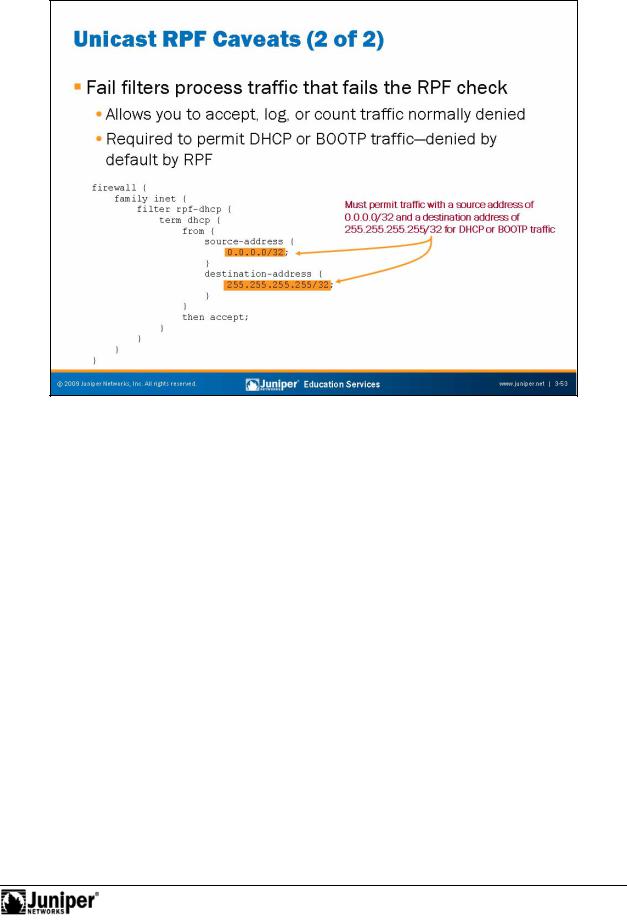
JUNOS Routing Essentials
When a deviceReproductionrunning JUNOS Software decides that a packet has failed the RPF check, it disca ds it by default. However, if you specify an optional fail filter, the device
processes packets that fail the RPF check through that filter prior to discarding them. forIn the fail filte , you can perform all the actions and action modifiers you could in any ther irewall filter, including accepting the traffic despite the packet failing the RPF check. (N tably, if you choose to log packets in an input firewall filter, but the packets
Nothen fail the RPF check, the software does not log them. To log these packets, you must log them in an RPF fail filter.)
On most devices running JUNOS Software, DHCP and Bootstrap Protocol (BOOTP) requests fail the RPF checks. To allow these requests, you must configure a fail filter that permits traffic with a source address of 0.0.0.0 and a destination address of 255.255.255.255. The slide shows a sample fail filter to include DHCP or BOOTP requests.
Routing Policy and Firewall Filters • Chapter 3–53
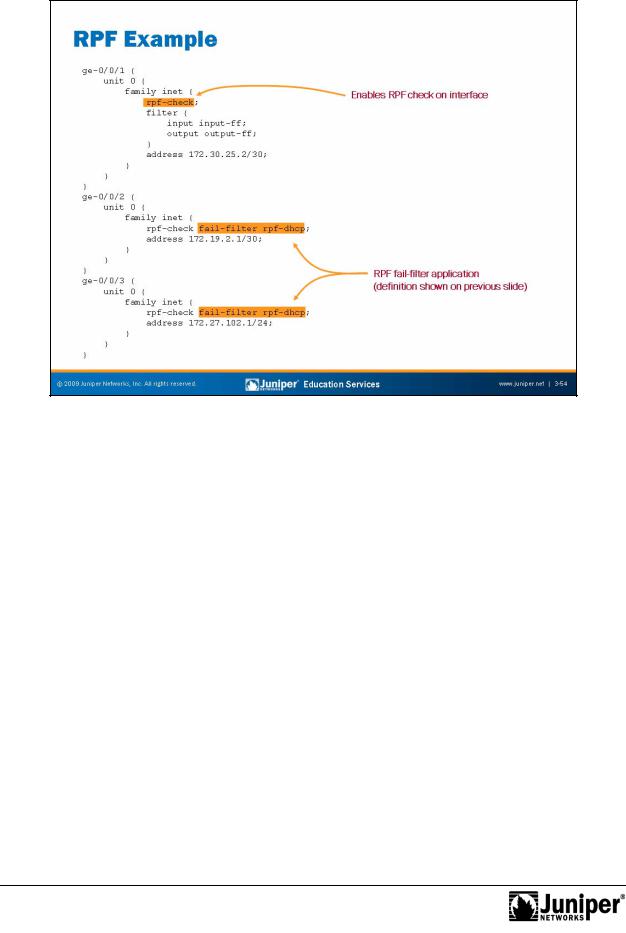
JUNOS Routing Essentials
In the example on the Reproductionslide, we enabled RPF in strict mode on all interfaces and it considers only the active paths to any prefix. The fail filter named rpf-dhcp applies
to the ge-0/0/2forand ge-0/0/3 interfaces. As you might remember the configuration defines the rpf-dhcp fail-filter the previous slide and permits DHCP and BOOTP requests. N w that y u enabled RPF on all interfaces, you do not need to include
Notan i-spoo ing terms within the firewall filters.
Chapter 3–54 • Routing Policy and Firewall Filters
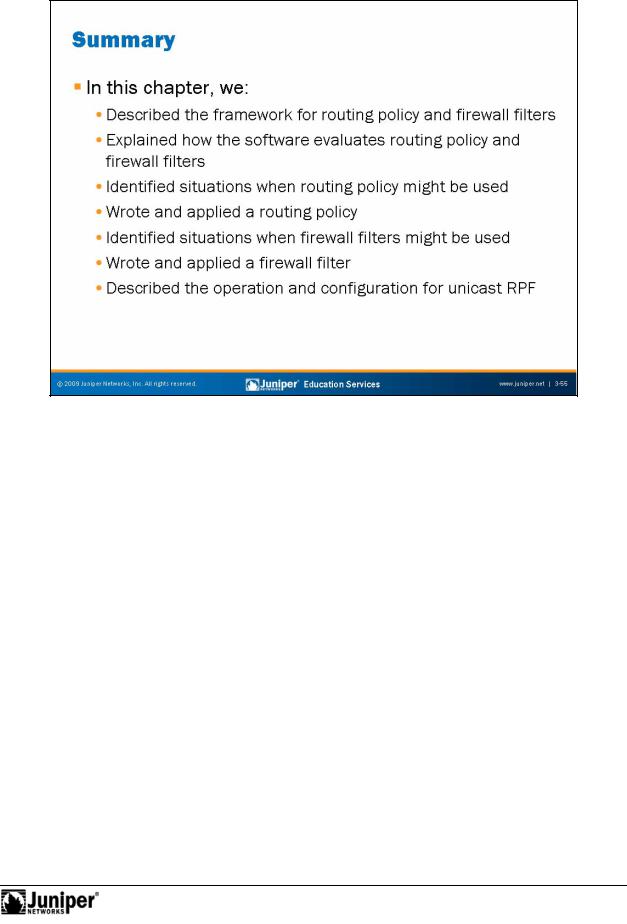
Not
JUNOS Routing Essentials
This ChapterReproductionDiscuss d:
The framework of routing policy and firewall filters;
Policy and firewall filter evaluation;
Typical usage scenarios for routing policy;
Configuring and applying a routing policy;
Typical usage scenarios for firewall filters;
Configuring and applying firewall filters; and
Unicast Reverse-Path-Forwarding.
Routing Policy and Firewall Filters • Chapter 3–55
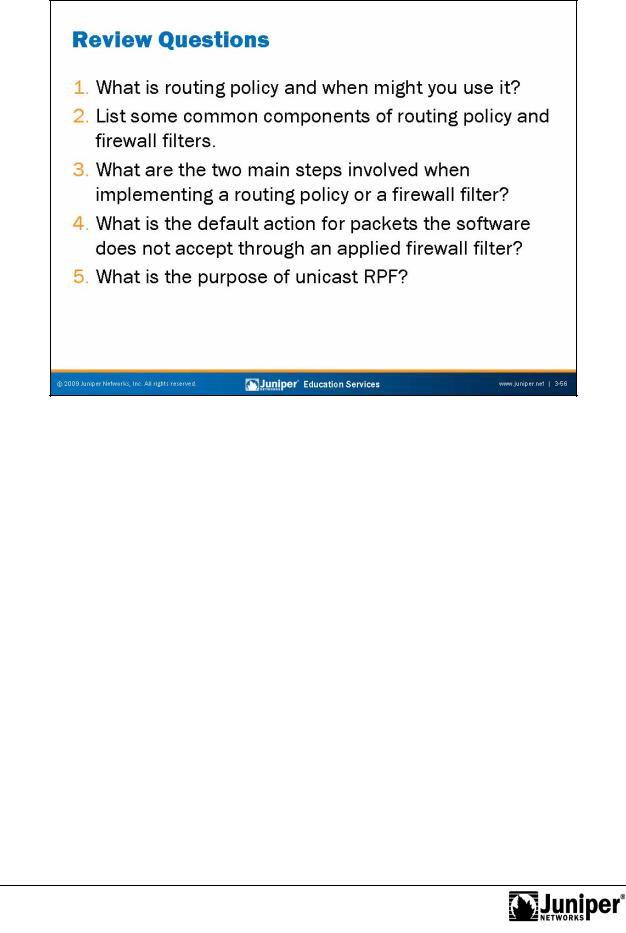
JUNOS Routing Essentials
Review Questions:
1.
2. |
for |
|
|
Not5. |
|
3. |
|
4. |
|
Reproduction
Chapter 3–56 • Routing Policy and Firewall Filters
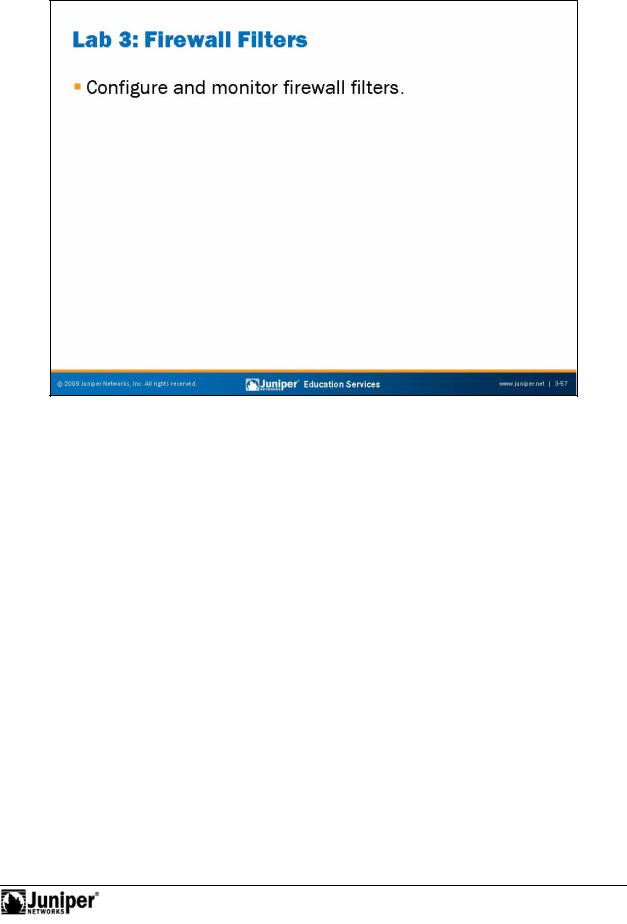
JUNOS Routing Essentials
|
|
Reproduction |
|
Lab 3: Firewall Filt rs |
|
|
The slide provides the objective for this lab. |
|
Not |
for |
|
|
|
|
Routing Policy and Firewall Filters • Chapter 3–57

JUNOS Routing Essentials
|
for |
Reproduction |
Not |
|
|
|
|
Chapter 3–58 • Routing Policy and Firewall Filters

JUNOS Routing Essentials
Chapter 4: Class of Service |
||
|
for |
Reproduction |
Not |
|
|
|
|
|
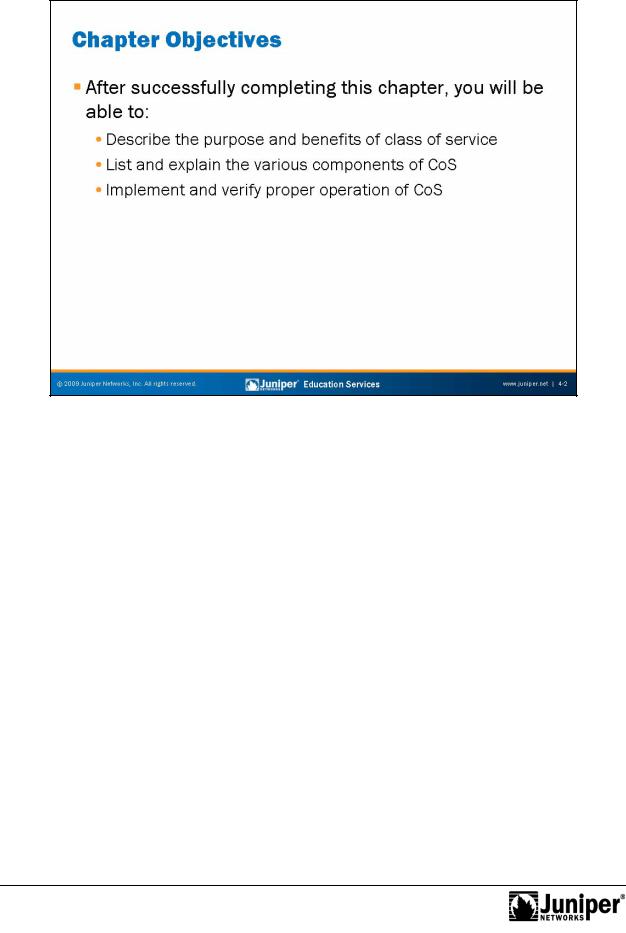
JUNOS Routing Essentials
This Chapter Discuss s:
• The purpose and benefits of class of service (CoS);
• |
Components used with CoS; and |
• |
ImplementationReproductionand verification of CoS components. |
|
for |
Not |
|
Chapter 4–2 • Class of Service
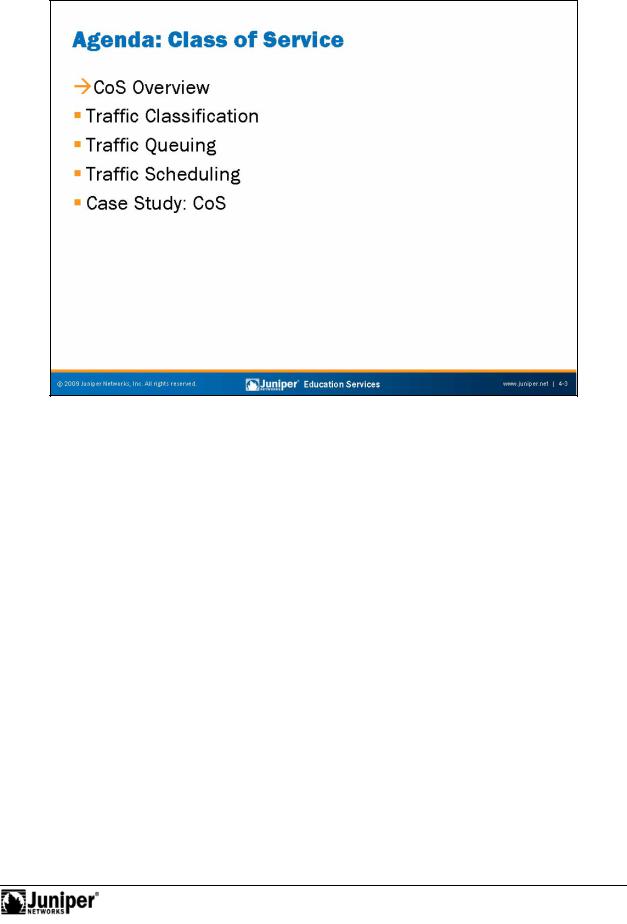
Not
JUNOS Routing Essentials
CoS OverviewReproduction
The slide lists the topics we discuss in this chapter. We discuss the highlighted topic
first. for
Class of Service • Chapter 4–3
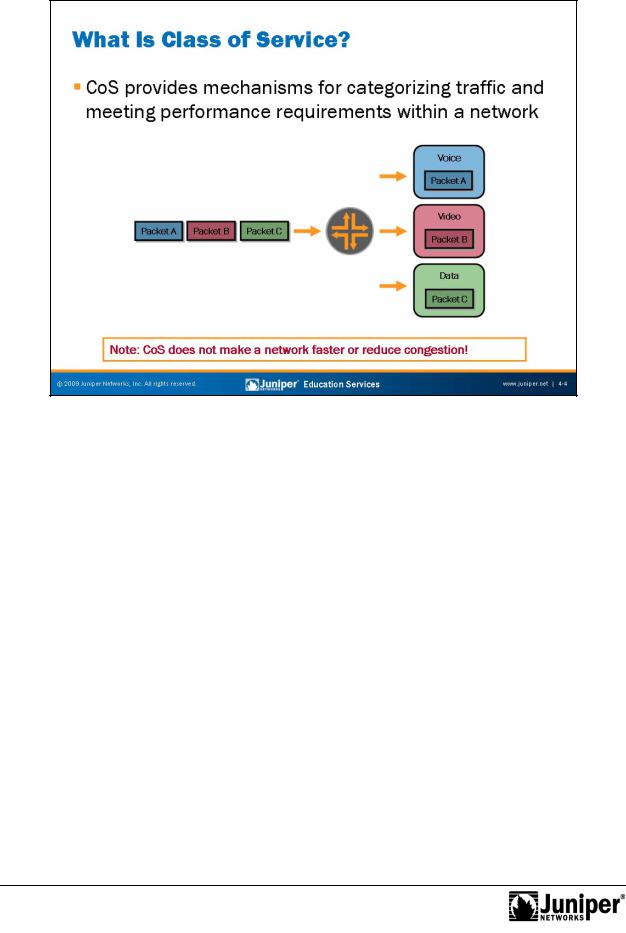
JUNOS Routing Essentials
and output queues, whichReproductionmeans the traffic is subject to the same potential for delays |
|
Uses of Class of Service |
|
By default, devices running JUNOS Software treat all transit traffic equally. The |
|
for |
|
software handles all t affic entering the device a first-come, first-served basis. The |
|
device mixes together all traffic transiting the system and places it in the same input |
|
and drops. We refer to this method as best-effort traffic processing. |
|
Not |
eatures available to devices running JUNOS Software allow differentiated |
The CoS |
|
services |
o network traffic where best-effort traffic processing is insufficient. Several |
c mp nents to the CoS tool kit exist. First, tools exist that allow the system to place traffic into different categories (named forwarding classes) where the system provides the same services. Second, certain components allow the system to treat traffic for each forwarding class in a unique manner. Finally, additional tools allow the system to mark packets with their category so that other devices in the network know how to categorize them.
CoS allows you to treat traffic differently by providing a minimum bandwidth guarantee, low latency, low packet loss, or a combination of these things for categories of traffic. Consequently, deploying CoS can make some applications perform better. However, it cannot increase the total bandwidth of a link or decrease latency beyond the minimum limits imposed by the speed of light. CoS cannot eliminate congestion within a network. CoS can, however, help you control how this congestion affects different types of traffic.
Chapter 4–4 • Class of Service
